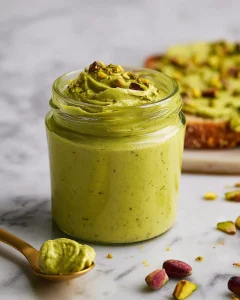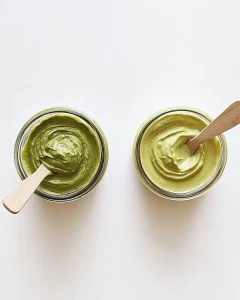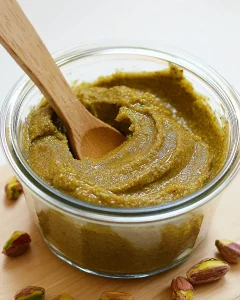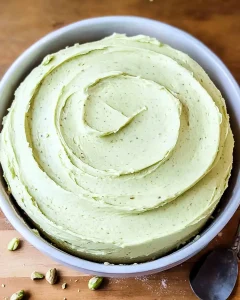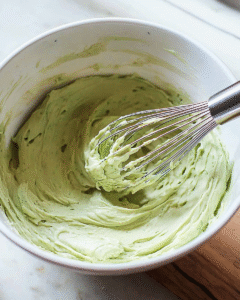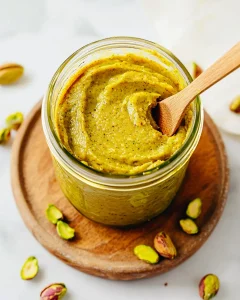Pistachio cream vs pistachio butter
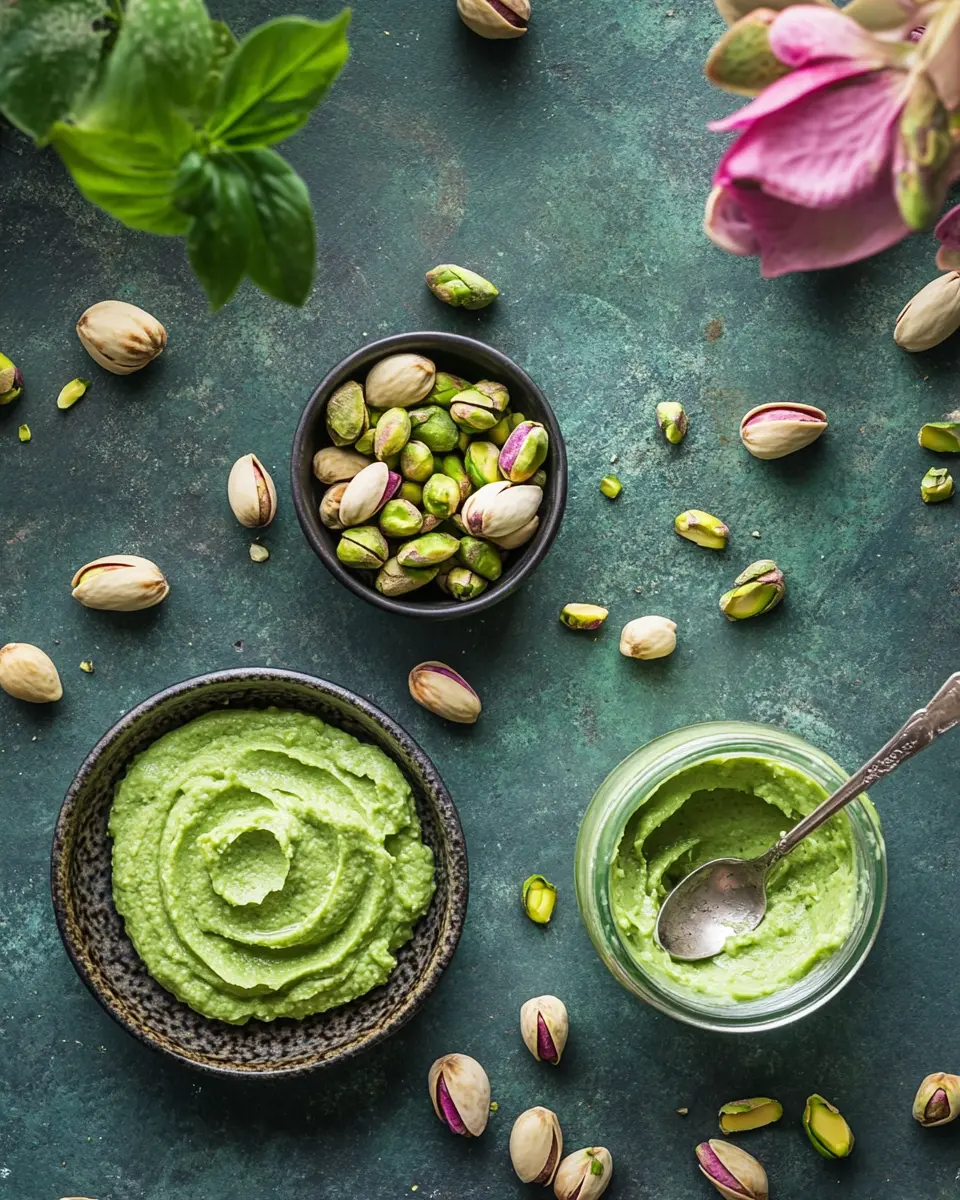
Pistachio cream vs pistachio butter comparison with homemade pistachio butter techniques. Master professional methods for perfect texture every time
Three years ago, I stood in my kitchen staring at what could only be described as pistachio gravel. My expensive food processor had given up, leaving me with chunky, dry bits instead of the silky pistachio cream I’d envisioned. That moment sparked an obsession that led me through countless batches, temperature tests, and technique refinements.
One of the first questions I wrestled with was pistachio cream vs pistachio butter. The difference wasn’t immediately clear, and many home cooks face the same dilemma. Are they interchangeable? Which one works better in desserts? Which one spreads more easily, or offers that pure, nutty punch? These are all part of the pistachio cream vs pistachio butter debate, and understanding the answer became a turning point in my journey.
After working with both commercial and homemade versions in professional kitchens, I’ve uncovered the essential distinctions that make or break these luxurious spreads. Pistachio cream leans toward sweetness and a smooth, dessert-ready texture, while pistachio butter is dense, deeply nutty, and often unsweetened—ideal for culinary purists or savory applications.
Today, I’ll share the professional techniques that transformed my early pistachio disasters into restaurant-quality creations. You’ll learn the precise methods, timing, and troubleshooting strategies that separate amateur attempts from masterful results. Whether you’re craving the light elegance of pistachio cream or the intense richness of pistachio butter, this guide delivers the expertise you need—and finally puts the pistachio cream vs pistachio butter confusion to rest.
Table of Contents
Jump to:
Understanding the Fundamental Differences

The distinction between pistachio cream and pistachio butter extends far beyond texture. In my years of working with both, I’ve identified three critical factors that define each spread’s character and application. For anyone exploring pistachio cream vs pistachio butter, these foundational differences are essential to understand before choosing one for your next recipe.
Texture Profile and Mouthfeel
When it comes to pistachio cream vs pistachio butter, texture is the first and most noticeable divergence. Pistachio cream maintains a lighter, more aerated consistency that spreads effortlessly at room temperature. During my time at a French patisserie, we used pistachio cream for delicate macarons and tart fillings where smoothness was paramount. The cream incorporates air during processing, creating a luxurious mouthfeel that doesn’t overpower subtle flavors.
Pistachio butter, conversely, delivers concentrated intensity with a denser structure. I remember the first time I achieved the perfect pistachio butter consistency – it held its shape when spooned but melted beautifully on warm bread. This density makes it ideal for applications requiring bold pistachio flavor, such as nut butters, energy bars, or savory spreads.
Processing Methods and Equipment
Another key factor in the pistachio cream vs pistachio butter comparison lies in how each is made. Creating pistachio cream requires a two-stage approach that I perfected through trial and error. First, I process blanched pistachios at 165°F for 45 seconds, then gradually add neutral oil while maintaining temperature control. The key lies in preventing overheating, which causes oil separation and grainy texture.
Homemade pistachio butter, on the other hand, demands patience and persistence. I process raw pistachios for 8–12 minutes, scraping down sides every 90 seconds. The transformation happens gradually—first powder, then paste, finally smooth butter. Temperature management becomes crucial as friction heat can exceed 180°F, leading to bitter flavors and a chalky finish.
Professional Technique: Mastering Pistachio Cream
Perfecting pistachio cream requires more than just blending nuts—it’s about precision, control, and understanding the science behind texture. My signature method emerged from studying Italian gelato masters who understood the importance of temperature precision and timing. If you’re comparing pistachio cream vs pistachio butter in terms of technique, you’ll notice how much more delicate and temperature-sensitive the cream-making process is.
Essential Equipment and Setup
A high-powered food processor with at least 1200 watts provides the necessary torque for smooth processing. I’ve tested several models, and anything below that threshold tends to overheat or stall before achieving a truly creamy texture. Unlike pistachio butter, which can tolerate a bit more resistance, pistachio cream demands sustained, smooth blending.
Temperature monitoring is equally crucial. I consider an infrared thermometer indispensable for consistent results. In the pistachio cream vs pistachio butter debate, temperature plays a defining role—especially in cream, where texture is more susceptible to small thermal fluctuations. The bowl temperature directly affects oil release and emulsification.
Step-by-Step Professional Method
- Start with 2 cups (280g) of blanched pistachios, ensuring they’re completely dry. Even minimal moisture (over 3%) will inhibit proper oil release and result in a grainy consistency. I often toast the pistachios lightly at 300°F for 5 minutes to eliminate residual moisture.
- Process the nuts for 45 seconds until they become a fine powder. Immediately check the temperature—it should reach between 160–165°F. This heat activates the pistachios’ natural oils and preps them for emulsification.
- Add 2 tablespoons of neutral oil (grapeseed is my preferred choice) while the processor is running. Ensure the oil temperature matches the nut temperature to prevent “shocking” the mixture, which can cause separation.
- Continue processing for another 60–90 seconds until a smooth paste forms. If needed, gradually incorporate more oil in small increments. Throughout the process, keep the mixture between 160–170°F. This range ensures optimal viscosity and silkiness.
- The final cream should coat a spoon without dripping immediately. It should feel light on the tongue but have enough structure to hold shape—this is the hallmark of a well-made pistachio cream.
When comparing pistachio cream vs pistachio butter, this method highlights why pistachio cream is favored in high-end patisserie and gelato applications. The process is less forgiving but yields a more refined result when done right.
Advanced Pistachio Butter Mastery
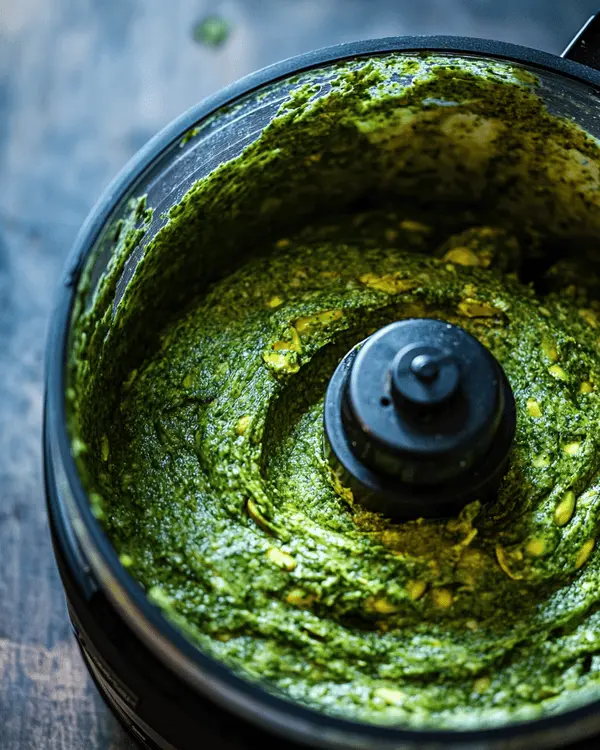
Creating exceptional homemade pistachio butter is an art rooted in precision, sensory awareness, and patience. Unlike pistachio cream, which relies on emulsification and temperature-controlled oil addition, pistachio butter is all about unlocking the nut’s natural richness through sheer mechanical force. In the ongoing pistachio cream vs pistachio butter conversation, understanding how each transforms during processing reveals why they perform so differently in culinary applications.
The Four Stages of Transformation
Mastering pistachio butter means recognizing the distinct stages that signal progress. Each phase not only reflects a physical change but also informs when to pause, adjust, or continue.
- Stage One: Fine Powder
Within the first 60–90 seconds, the pistachios break down into a dry, flour-like consistency—very similar to almond flour. The mixture looks pale, clings to the processor walls, and shows no visible oil. - Stage Two: Thick Paste
By minute four, a clay-like paste forms as the nuts begin releasing their oils. This stage is dense and resistant to motion. It’s tempting to stop here, but for true pistachio butter, it’s just the halfway mark. Compared to pistachio cream, which incorporates added oil, this stage feels much heavier and less pliable. - Stage Three: Semi-Smooth Spread
Between minutes six and eight, the paste loosens up. Oils are now fully engaged, and the mixture becomes spreadable—though still slightly gritty. This stage is where many home cooks stall, not realizing that one more minute can make all the difference. The pistachio cream vs pistachio butter debate often centers around this texture—cream is smoother sooner, but butter requires more persistence. - Stage Four: Glossy, Creamy Finish
Suddenly, the transformation is complete. Within 30–60 seconds, the mixture becomes glossy, fluid, and effortlessly spreadable. The sound changes too—from a heavy churn to a smooth whirl. This final stage is the reward for your patience.
Whether you’re working with pistachio cream, butter, or exploring other nut-based options, understanding the full spectrum of available products is crucial for culinary success. Our detailed Pistachio Cream vs Nut Butter comparison covers everything from nutritional profiles to professional baking applications, giving you the expertise to choose the perfect spread for any occasion. This comprehensive resource has become essential reading for both home bakers and professional chefs.
Temperature and Timing Precision
Temperature control is critical throughout the pistachio butter-making process. I monitor the internal temperature consistently, never allowing it to exceed 180°F. Exceeding this point risks altering the flavor, causing bitterness, and degrading the final texture.
When temperatures rise too quickly, I pause processing for 30-second intervals, allowing the mixture to cool naturally. This method preserves both flavor and structure.
Total processing time varies from 8 to 15 minutes, depending on several factors:
- Nut freshness: Fresher pistachios release oil more easily.
- Processor wattage: Higher-powered machines finish faster with less heat buildup.
- Desired texture: Some prefer a slightly rustic butter; others aim for ultra-smooth.
Understanding these variables—and how they differ in the pistachio cream vs pistachio butter workflow—makes all the difference when producing a truly gourmet result.
Comparison Analysis: When to Choose Each Method
| Aspect | Pistachio Cream | Pistachio Butter | Best Use Cases |
|---|---|---|---|
| Processing Time | 3-5 minutes | 8-15 minutes | Cream: Quick preparation; Butter: Meal prep |
| Oil Content | Added oil required | Natural oils only | Cream: Light applications; Butter: Rich spreads |
| Shelf Stability | 2-3 weeks refrigerated | 4-6 weeks refrigerated | Cream: Fresh use; Butter: Long-term storage |
| Texture Control | Easily adjustable | Fixed consistency | Cream: Versatile; Butter: Consistent |
| Equipment Demand | Moderate | High-powered needed | Cream: Standard processor; Butter: Professional grade |
| Flavor Intensity | Mild, refined | Bold, concentrated | Cream: Delicate dishes; Butter: Feature ingredient |
Troubleshooting Common Problems
| Problem | Likely Causes | Immediate Solutions | Prevention Methods |
|---|---|---|---|
| Grainy texture | Insufficient processing, low temperature | Process 2-3 minutes longer, increase temperature to 165°F | Use high-powered processor, ensure dry nuts |
| Oil separation | Overheating, too much added oil | Cool mixture, reprocess briefly | Monitor temperature, add oil gradually |
| Too thick consistency | Insufficient oil release, old nuts | Add 1 tsp oil gradually, process longer | Use fresh nuts, ensure proper processing time |
| Bitter flavor | Overheating above 180°F | Start fresh batch, monitor temperature | Use temperature gun, pause when too hot |
| Won’t come together | Moisture in nuts, weak processor | Dry nuts thoroughly, use powerful equipment | Store nuts properly, invest in quality processor |
Professional Timeline Guide
| Time Marker | Pistachio Cream Process | Pistachio Butter Process | Key Checkpoints |
|---|---|---|---|
| 0-1 minute | Initial processing to powder | Chopping to fine pieces | Check for even consistency |
| 1-3 minutes | Add oil, process to paste | Powder formation begins | Monitor temperature rise |
| 3-5 minutes | Final smoothing, texture check | Thick paste development | Assess oil release |
| 5-8 minutes | Complete (cream finished) | Paste smoothing stage | Scrape sides frequently |
| 8-12 minutes | N/A | Final butter consistency | Watch for sudden smoothing |
| 12-15 minutes | N/A | Polish and perfect texture | Final temperature check |
Storage and Preservation: Pistachio Cream vs Pistachio Butter Best Practices
Proper storage techniques can dramatically extend the shelf life and quality of both pistachio cream and pistachio butter. Understanding the differences in how each behaves over time is essential—not only for home cooks but also for professionals looking to preserve flavor integrity. In the broader pistachio cream vs pistachio butter discussion, storage is one of the most overlooked yet crucial aspects.
Optimal Storage Conditions
Both spreads require airtight, non-reactive containers to prevent oxidation and flavor degradation. I exclusively use glass jars, which don’t absorb oils or leach plastic flavors, unlike lower-quality plastic containers. Choose a jar size that minimizes headspace—trapped air accelerates rancidity, especially in high-fat spreads.
Refrigeration is non-negotiable for extended shelf life.
- Pistachio cream maintains peak quality for 2–3 weeks when stored between 35–38°F.
- Pistachio butter, being less emulsified and often oil-rich, stays fresh slightly longer—4–6 weeks under the same conditions.
This variance underscores another important aspect of pistachio cream vs pistachio butter: cream is more delicate due to added oils and emulsifiers, while butter has a denser structure that slows oxidation.
Quality Indicators and Freshness
Always assess freshness before use. Fresh pistachio spreads should have a vibrant green color, smooth consistency, and a clean, nutty aroma. When quality declines:
- The color fades toward a dull brown.
- Aromas become stale or sour.
- In pistachio cream, sweetness may diminish and texture may become sticky or clumpy.
Oil separation is a natural occurrence, especially in pistachio butter. It often results from temperature fluctuations and doesn’t necessarily indicate spoilage. A simple stir usually restores proper consistency. However, persistent pooling or odd textures can hint at early rancidity.
In the context of pistachio cream vs pistachio butter, knowing how each reacts to time, temperature, and storage variables gives you more control over flavor, freshness, and overall culinary performance.
Creative Applications and Pairing Ideas: Pistachio Cream vs Pistachio Butter in the Kitchen
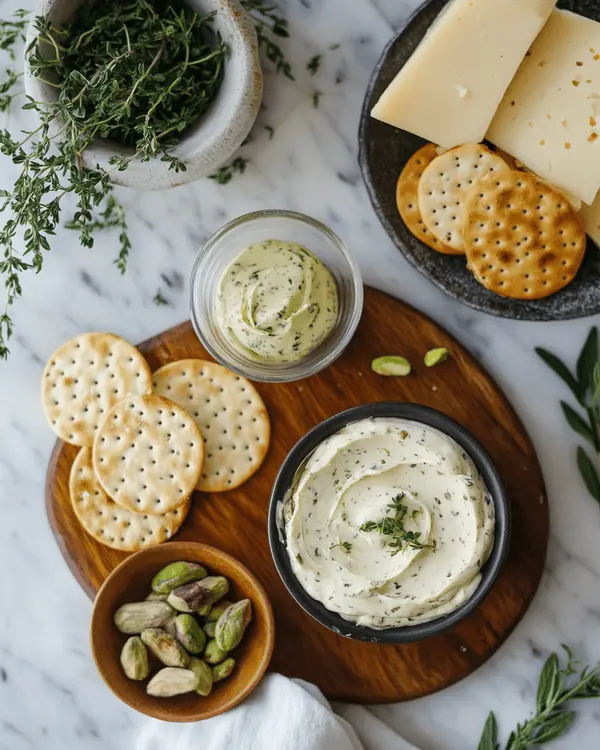
Over the years, my culinary experiments with both pistachio cream and pistachio butter have revealed distinct roles for each. When evaluating pistachio cream vs pistachio butter in terms of versatility and flavor pairing, the key lies in understanding how their textures and intensities complement different dishes.
Pistachio Cream Applications
Pistachio cream’s smooth, airy consistency makes it the perfect choice for light pastries and desserts that call for refinement rather than dominance. In professional kitchens, I’ve used it successfully in:
- Cream puffs and éclairs for a subtle nutty contrast.
- Tart fillings and frangipane bases that require stability without heaviness.
- Buttercream frostings, where it adds depth without overpowering vanilla or fruit components.
For lighter fare, pistachio cream excels in breakfast and brunch settings:
- Spread over delicate toast or brioche (without tearing the bread).
- Swirled into smoothie bowls and yogurt parfaits.
- Blended into nut-milk lattes for a creamy, slightly sweet pistachio finish.
These uses highlight why, in the pistachio cream vs pistachio butter conversation, cream is often favored in patisserie and delicate preparations.
Curious how pistachio cream elevates delicate desserts? Discover the secret behind our Heavenly Pistachio Raspberry Dream Cake and its luscious pistachio layers.
Pistachio Butter Versatility
Pistachio butter brings boldness and density, making it ideal for hearty, texture-rich applications. I rely on it for:
- Energy balls and protein bars, where its natural oils and nutty punch enhance both structure and flavor.
- Thick smoothies that benefit from its richness and mouth-coating texture.
What surprised me most over time were its savory capabilities:
- A thin layer on crackers topped with aged gouda or manchego transforms into an elegant appetizer.
- Drizzled into roasted vegetable bowls or dolloped over grilled meats, it introduces depth and nuance.
- In Middle Eastern-inspired sauces, pistachio butter pairs beautifully with lemon, tahini, and herbs.
This contrast in usage—refined versus robust—is at the heart of the pistachio cream vs pistachio butter distinction. Each brings a different kind of magic to the table, and knowing when to use which can elevate both sweet and savory dishes effortlessly.
Explore bold, savory pistachio butter applications with recipes like our Viral Dubai Chocolate Pistachio Kataifi Cake—a stunning mix of rich textures and flavors.
Frequently Asked Questions
Is pistachio butter the same as pistachio cream?
When considering pistachio cream vs pistachio butter, it’s important to understand that pistachio butter is pure ground pistachios, while pistachio cream includes added sugar, oils, and sometimes white chocolate for a sweeter, smoother spread.
What is pistachio cream used for?
Pistachio cream is used for desserts, pastries, coffee drinks, and savory dishes like pasta sauces and mortadella sandwiches.
Can you substitute pistachio butter for pistachio paste?
While you can substitute pistachio butter for pistachio paste in many recipes, especially spreads and sauces, paste is generally preferred in baking for its more concentrated flavor and smoother consistency. This distinction highlights another key nuance in the pistachio cream vs pistachio butter debate—each has its place depending on texture and intensity requirements.
Does Dubai chocolate use pistachio cream or butter?
Dubai chocolate uses pistachio cream, not butter, as the sweetened cream provides the desired sweetness and texture.
What is in pistachio butter?
What chocolate is suitable for Muslims?
Chocolate suitable for Muslims is halal-certified, free from haram ingredients like gelatin, alcohol, or E120 coloring.
Final Thoughts: Mastering the Pistachio Cream vs Pistachio Butter Journey
The journey from raw pistachios to luxurious, handcrafted spreads is as rewarding as it is technical. Success depends on patience, precision, and a deep understanding of the differences between pistachio cream vs pistachio butter—not just in texture and flavor, but in process and purpose.
Over the years, my experiments and professional applications have shown that both pistachio cream and pistachio butter offer distinct experiences. Pistachio cream brings elegance, airiness, and subtlety, ideal for refined desserts and delicate pastries. Pistachio butter, on the other hand, delivers boldness, density, and versatility across both sweet and savory creations.
The techniques I’ve shared here are designed to eliminate guesswork and empower you with reliable, repeatable methods. No matter which side of the pistachio cream vs pistachio butter spectrum you start on, the lessons learned through hands-on experience will quickly elevate your results.
Start with the preparation that best suits your taste or intended dish. Keep a journal—note your temperatures, processing times, and texture shifts. These observations form the foundation of your pistachio-making intuition.
And most importantly, share your results. Your creative variations and real-world outcomes not only refine your skill but also inspire others to explore these luxurious spreads and develop their own signature techniques. The world of pistachio perfection is wide open—your journey has just begun.
Ready to master pistachio butter at home? Follow our detailed guide in Pistachio Butter: Ultimate Homemade Recipe to create your own creamy, nutty spread.

